Pontificating Posture
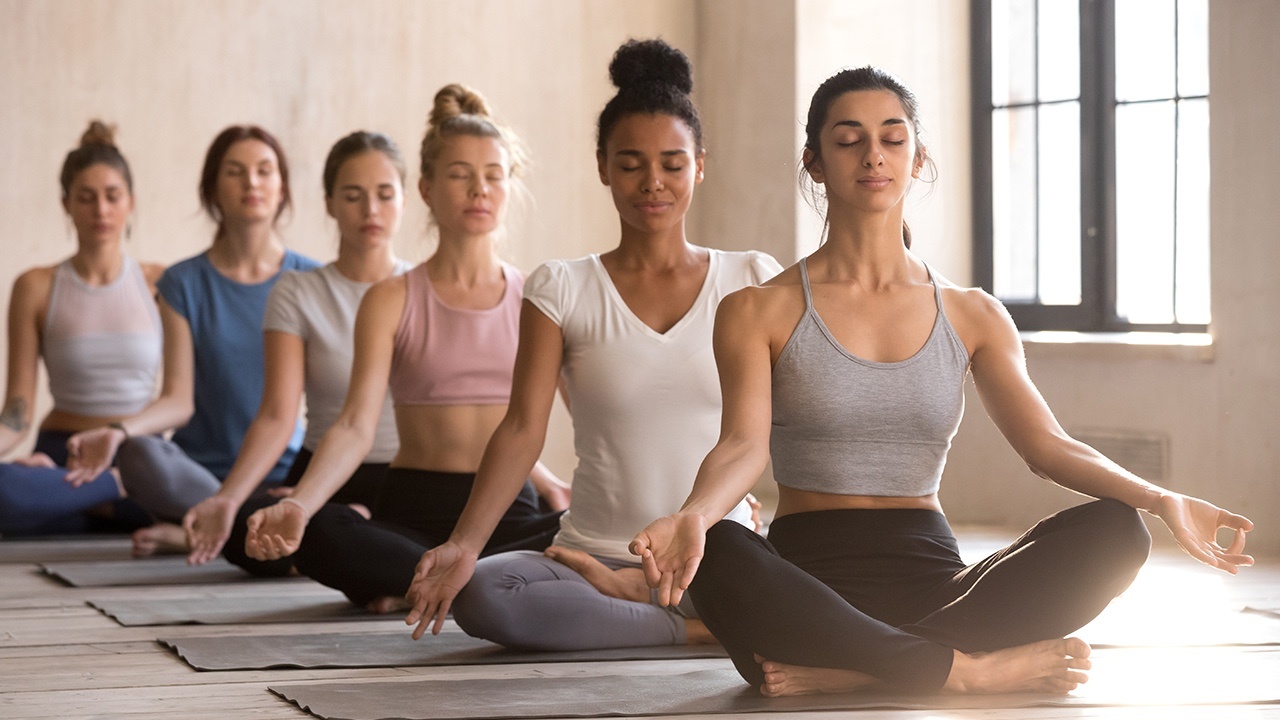
Posture is a concept most of us will have been aware of from as far back as our earliest memories. Whether through direct or implied social instruction, the inference that it matters how we hold and conduct ourselves is imbedded in the psyche of most of us. Widely described as the position in which someone holds their body when standing or sitting, the concept of posture extends beyond static alignment considerations, to include the carriage of the body during dynamic biomechanical processes during locomotion and functional movement tasks. Optimal postural form has been codified across a wide variety of societal settings including education, health and physical performance environments of military, sport, and dance. Despite this, approaches defining the biomechanical coordinates of optimal postural alignment are fraught with inconsistencies, due in part to the multifactorial and complex nature of their rationalisation1. In this article we consider the rationale of postural correctness in the context of movement teaching agendas focused on functional performance, health, and well-being.
Communication
Who we are and how we project ourselves begins with our DNA. Instincts drive our rudimentary responses to the interactions we have with the world around us. How we feel and what we think is quite literally written in our facial expressions and body language2,3. It is learned behaviour that enables us to control those initial involuntary physiological responses. Learning to control what we communicate and how we respond to those around us, is essential for establishing and maintaining physical and psychological well-being. Throughout our lives, protecting and nourishing ourselves is often contingent on us giving the right responses. Acquiescence to socially defined behavioural norms facilitates our endeavours within our social frameworks. It is little wonder that ideas of postural correctness and interpretations of postural traits have emerged across social frameworks and cultures over the centuries1.
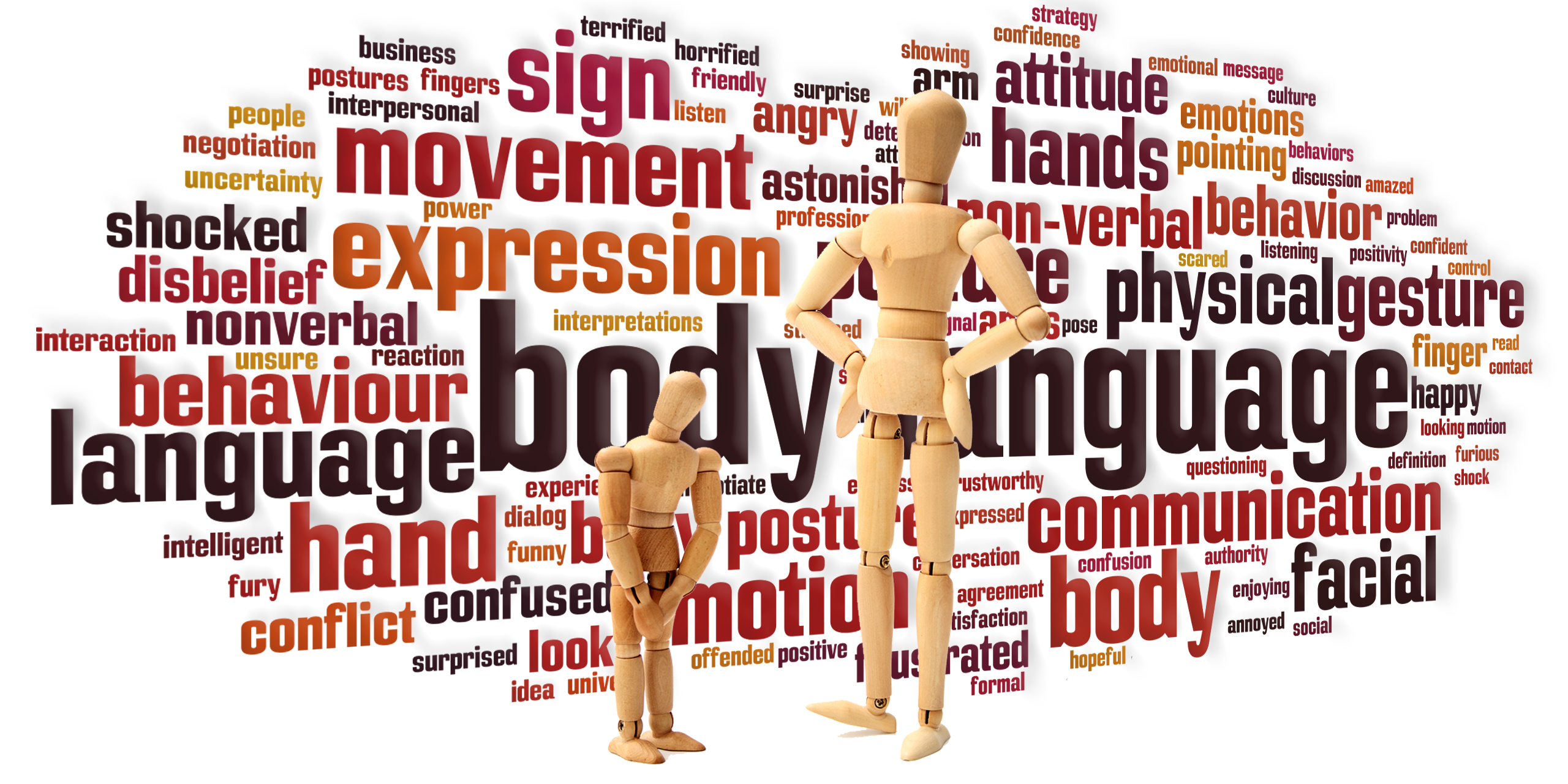
Look beyond posture laws – search for truth!
The rationale and justification associated with specific postures are complex and driven by a variety of factors. Social, religious, and political agendas, alongside approaches for improved health, well-being and physical performance have all shaped opinions and expectations regarding posture1. Consequently, beliefs and behaviours related to posture have become entangled with mistruths designed to subjugate, manipulate, and control individuals and even entire populations. Most of us from a young age have been exposed to some form of conditioning that influences how we hold and carry ourselves within our day-to-day environments, especially in the presence of others. Therefore, when considering posture in a movement teaching setting, we must endeavour to pick apart and scrutinise our own reference system as well as those of our clients. We must look for the truth in what is important about alignment and carriage of structure for those we teach. We will find that truth within their aspirations along with their physiological and psychological potential to adapt.
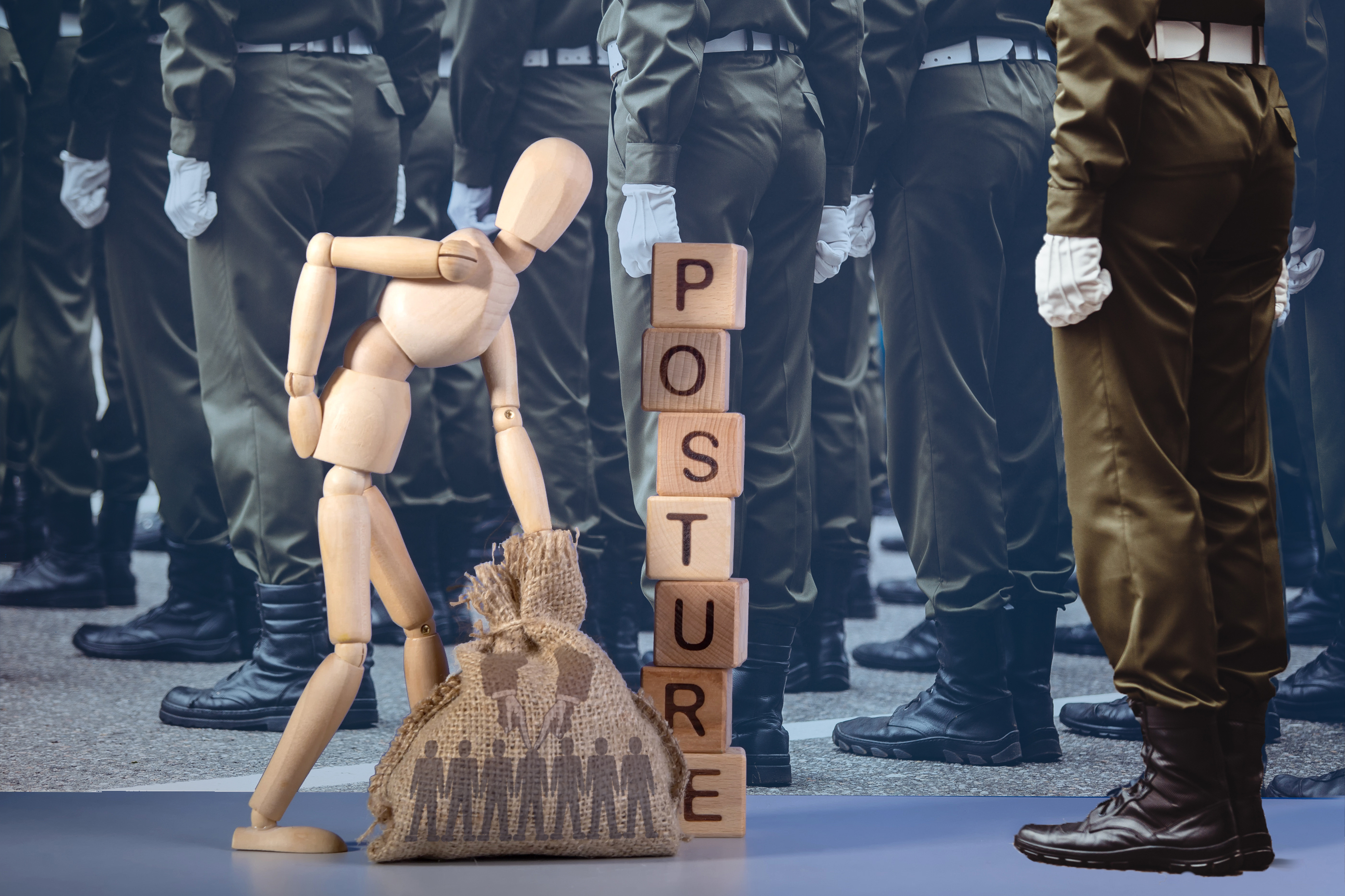
The illusion of an ‘ideal’
When considering health, well-being, and physical performance, we might ponder the question, ‘is there an ideal alignment of skeletal structures in relation to one another and their orientation with the surrounding environment?’ Academic study has certainly proposed many such notions, giving us concepts like “neutral alignment”, and working definitions of postural types4. Consequently, attempting to define, attain and perfect an ‘ideal posture’ as a definitive alignment of structure is a common practice in many movement teaching disciplines, with concepts like neutral spine and pelvis being adopted verbatim and promoted generically regardless of spatial orientation, task mechanics, or the physiological capabilities of the individual performing it.
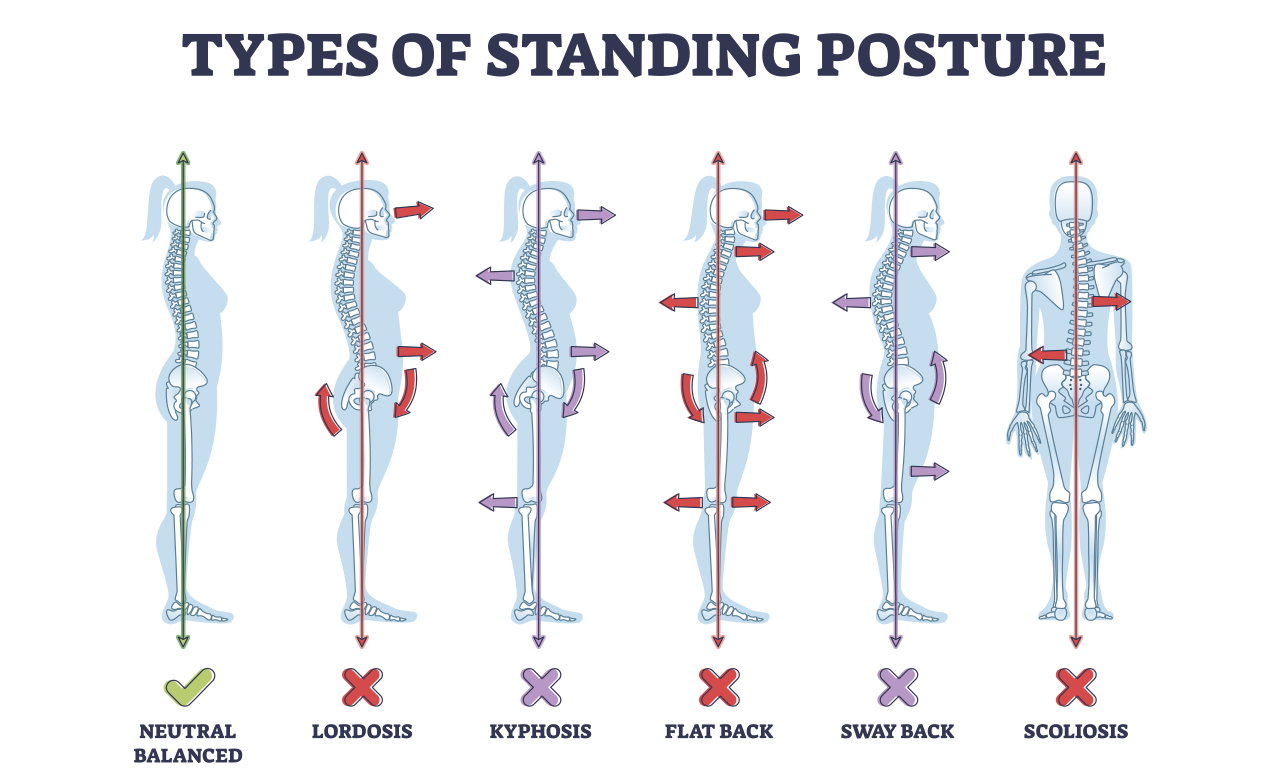
Given a specific physical task, it might seem reasonable to assume that there would indeed be an optimal alignment of structure for the effective and efficient performance of that specific task. However, the idea of a singular alignment like neutral spine, fails to acknowledge the fundamental nature of biological form. From the womb to the grave, our biology is in a constant state of motion dictated by the environment and our interaction with it. Even standing or sitting still, involves motion, the act of balancing and breathing alone will produce movement and changes to alignment. Dynamic refinement of alignment is constantly needed to maintain effective and efficient biomechanical responses to the challenges presented by the environments we occupy and the physical tasks we perform within them. This has been clearly explained and evidenced through biomechanical study5,6 and is fundamental to somatic approaches to movement education7-10. Psychosocial, biomechanical, and experiential perspectives on posture all support the same position; ‘Ideal posture’ is an illusion. While the concepts around symmetry and posture can be used effectively in the initial stages of learning novel movements and forms, chasing the acquisition of ‘the ideal’ will stifle efficiency and fluidity of motion.
Aesthetic influences on correctness
If only it were as simple as pursuing optimal alignments for biomechanical efficiency within human movements. However, like it or not, there will often be aesthetic expectations to be aware of too. Deliberating concepts of posture in the context of codified (technically defined) movement practices like dance, aesthetic sports, and military drills, warrants additional consideration. Many of the physical forms and movements utilised within codified forms have been set out and defined in literature, educational syllabus, and the individual interpretations of teachers. This inevitably results in rules regarding definitive structural alignments being set. When these aesthetic expectations are not attainable but are none the less belligerently pursued, the consequences can be disastrous for mental and physical health. It is therefore imperative that a person-centred approach be adopted wherever possible and that within the constraints of defined forms, adaptations should be implemented to enable performance outcomes to be achieved within acceptable limits of the activity being performed.
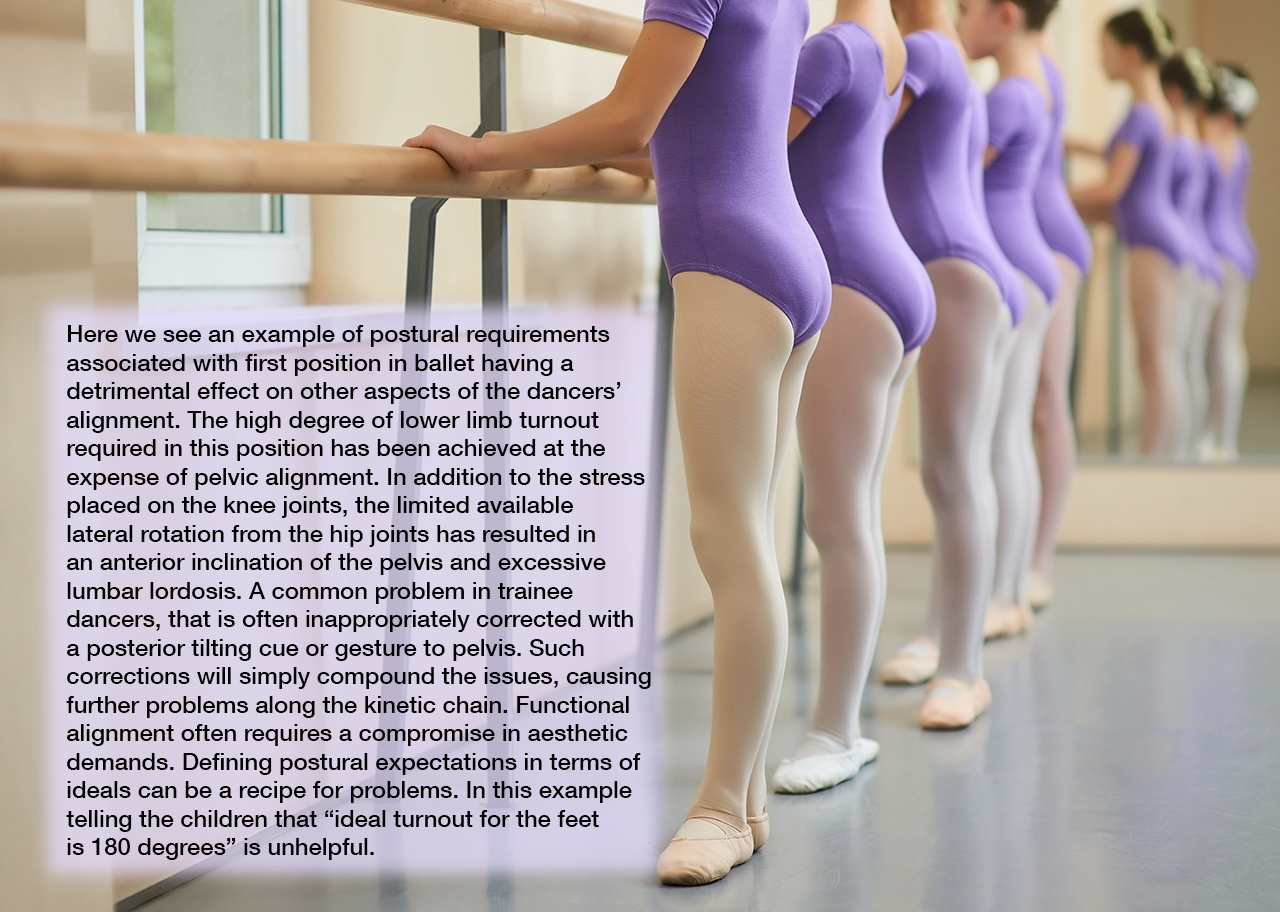
Mismatched aesthetic demands within exercises
Exercises are also by their very nature, codified forms of movement. Aside from person-centred adaptation, it is also important to consider the origins of exercises and their original purpose (check out the “The purpose of an exercise” tutorial in the professional membership area). Far too often, rules related to alignment and form are interchanged between exercises without consideration of context and relevance. The generic use of neutral alignment of the lumbopelvic region, regardless of spatial orientation or peripheral joint actions in exercise settings, is a case in point. The argument about ‘spinal imprint’ during exercises targeting the abdominal muscles has raged for decades across various exercise methodologies. Ironically, it barely matters if strength or endurance training (through overloading) the abdominal muscles is the objective! In contrast, dynamically maintaining a kinetically balanced alignment (balancing the forces) between the pelvis, thoracic cage and head during activities where spinal stability is required, makes perfect sense from a movement efficiency perspective. There is no getting away from it, alignment matters when performing exercises. However, of what, when, why and how, are all important questions to consider. Simplification into standardised alignment instructions derived from entangled concepts surrounding posture is a remiss approach at best. Concepts like neutral pelvis and spinal alignment, certainly warrant greater scrutiny and contextual understanding within the movement teaching community. So, this is a subject we will undoubtedly return to often.
Where to start
So how should we approach this highly charged and emotive topic within our movement teaching practices? My advice would be to start by working through the following list of questions, the answers to which will guide you towards an objective and client-centred pathway:
- Does posture matter to this individual?
- If not don’t mention it! Use words like effective alignment, balance, efficiency, and ease of motion)
- If posture does matter (i.e. they mentioned it and suggested it needs improving), ask why? You need to know the following (be sensitive, find out what you can through light informal discussion, NOT direct insensitive questioning):
- What will improved posture mean for them?
- What will improved posture change for them?
- What will improved posture enable them to do?
- What will improved posture take away from them?
- The answers to these questions are what they really want to achieve!
- Do you think posture should matter to this individual?
- If yes, then why do you believe this?
- What are you basing your evaluation on?
- What validation do you have to back up your beliefs?
- Is bias influencing your perceptions?
- Your answers to these questions need careful consideration.
- If you still think the answer is yes, then how are you going to approach it.
- Should you use the P word with the client?
- How are you going to frame the objectives that relate to alignment awareness and control? (remember SMART goals!)
- If no, then what are you going to focus on and why? (always ask this question of yourself every time you teach!)
- If yes, then why do you believe this?
Closing thoughts
Respect the influence you have on those you teach. You too are human, therefore fallible. Always remain mindful of this and approach your teaching with an open mind. Always encourage experimentation, exploration, and expression without bias or boundaries imposed by conflicted notions like ‘posture’.
INSPIRE - never impose
ENCOURAGE - avoid fear
SUPPORT - relinquish control
References & further reading
- Gilman, S.L. “Stand Up Straight”: Notes Toward a History of Posture. J Med Humanit 35, 57–83 (2014). https://doi.org/10.1007/s10912-013-9266-0
- Ekman, P. (2004). Emotions revealed. Bmj, 328 (Suppl S5).
- De Gelder, B. (2006). Towards the neurobiology of emotional body language. Nature Reviews Neuroscience, 7(3), 242-249. https://doi.org/10.1038/nrn1872
- Kendall, F.P., McCreary, E.K., Provance G.P., Rodgers, M.M, Romani, W.A., (2005). Muscles: Testing and Function with Posture and Pain. Philadelphia, PA: Lippincott Williams & Wilkins
- Hall, S.J. (2018). Basic biomechanics (8th ). New York, NY: McGraw-Hill.
- Oatis, C.A. (2009). Kinesiology The Mechanics & Pathomechanics of Human Movement (2nd). Philadelphia, PA: Lippincott Williams & Wilkins, US
- Todd, M. E. (1968). The Thinking Body: A Study of the Balancing Forces of Dynamic Man (Vol. 14). Princeton Book Company Pub.
- Dowd, I. (1995). Taking Root to Fly: Articles on Functional Anatomy (3rd ed). New York: I. Dowd, 1995
- Feldenkrais, M. (1990). Awareness Through Movement. New York, NY: HarperCollins
- Franklin, E. (1996). Dynamic alignment through imagery. Champaign, IL: Human Kinetics.
Stay connected with news and updates!
Join our mailing list to receive the latest news and updates.
We hate SPAM too so will never sell your information, for any reason or bombard you with sales emails!

